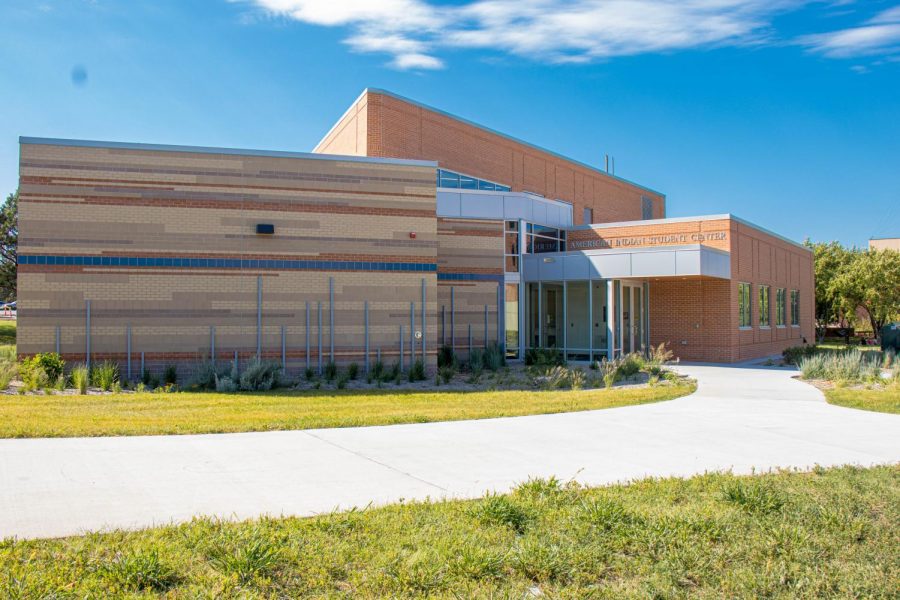A look into the new American Indian Student Center
August 26, 2020
The yellow and blue colored glass of the new American Indian Student Center shines with pride in the heart of campus. The new structure, completed in May, is a state-of-the-art facility that South Dakota State University’s American Indian student community is proud to call home.
Before the renovations, the previous AISC was located in the basement of the Enrollment Services center on the west side of campus. One of the stand-out benefits of the new facility is the central location.
“The idea of the (AISC) being in the center of campus was important so that our students could feel like they were connected to the university, that they were closer to their residential halls, they were closer to the student union and could interact more with other students on campus,” Director of American Indian Student Center Erica Moore said.
The building itself is also enriching to the American Indian student experience at SDSU. Upon immediate entry, the facility is primarily decorated with cultural elements and artwork.
Above the main room hang the flags of the nine tribal communities of South Dakota. There are multiple original art pieces throughout the space created by Rapid City artist Donald Montileaux. Both pieces illustrate important, often devastating, events in history, highlighting the journey of indigenous people in South Dakota. Paintings of other cultural events circle the space as well.
There is also a uniquely decorated drum room with a polished and repurposed tree split into columns to represent the seven council fires.
“My favorite piece is our drum room. This is a tree that has passed on. It was over 100 years old and they saved it,” Moore said.
The students and staff are also excited for their large classroom, where they can teach and collaborate with the entire campus community about different aspects of American Indian culture.
“I would say the most exciting thing about our building is the ability to host different folks in this space,” American Indian Program Coordinator Amber Morseau said.
Perhaps even more impressive than the new building itself, is what it means to students and faculty alike.
“It brings us closer to campus and allows people to know that we’re here,” said Aleksey Broken Rope, president of the American Indian Student Association. “Because, you know, we were off in the distance in a basement, and no one knew where our center was.”
Those working in the space respect the deeper meaning the new building represents for the Native American community on campus. For them, the significance of this building extends far beyond a newer, conveniently located space.
“For us to have this gift of the new building that only we have occupied this space, that speaks volumes,” Morseau said. “Because you’re actually putting the needs and wants of American Indian students at the forefront of your agenda. That really spoke to our students because it’s like hey, someone is recognizing us not as a second thought, but a first priority.”
Morseau mentioned several programs the center will be hosting this year for those who would like to get involved. The center provides many outlets specifically for American Indian Students including beading, sewing circles and their men’s drum group. It emphasizes how these activities act as a form of self care for the American Indian student population at SDSU.
Although it is called the American Indian Student Center, they host events for the entire SDSU community to experience. They’re working with the Multicultural Center on programs that create a center of learning for people who may identify differently, but still want to serve underrepresented communities.
“We’re very welcoming. Just because it says the name doesn’t mean it belongs just to us,” Broken Rope said.
What AISC staff want the campus community to take away when experiencing the space is the importance the center represents in retention and growth in American Indian communities, something they felt they did not have in school.
“One of the things that I would like people to know is that this is a physical manifestation of the university’s commitment to our American Indian students,” Morseau said.






















